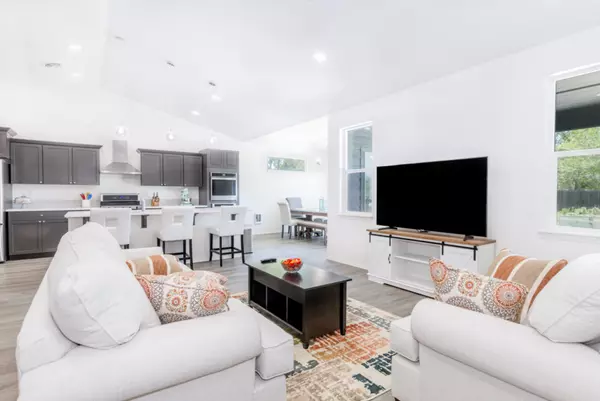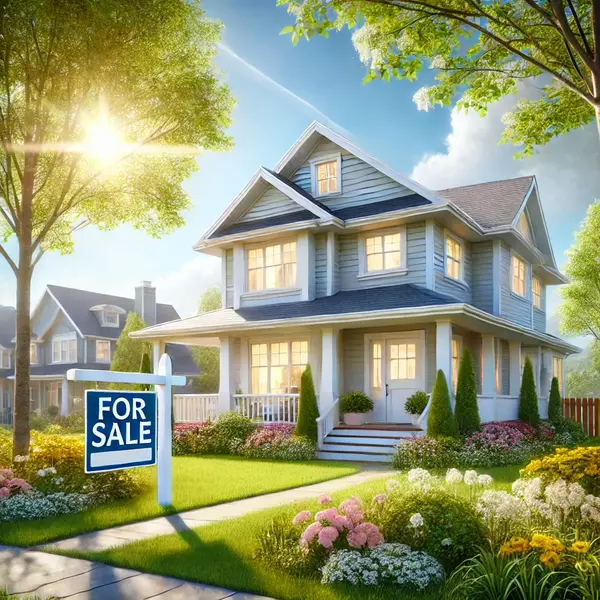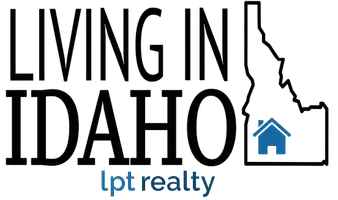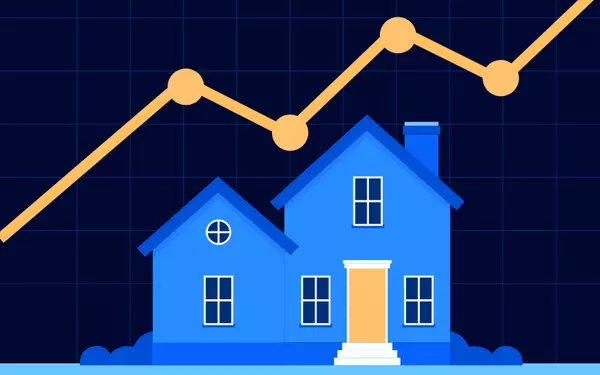
Boise Housing Market Forecast for 2024 | Living In Idaho
Boise Housing Market Forecast for 2024 As we look ahead to 2024, several factors will influence the Boise housing market: 1. Modest Price Appreciation Boise is expected to see modest price appreciation in 2024. While the days of 20%+ annual price increases might be behind us, experts predict a steady rise in home values by 3-5%. This increase will be fueled by ongoing demand, driven by Boise's attractiveness to out-of-state buyers, especially from California and Washington. 2. Interest Rates Stabilizing After the aggressive rate hikes of 2023, interest rates are anticipated to stabilize in 2024. This stabilization could reignite buyer interest, especially among those who were priced out of the market due to high borrowing costs. However, rates are expected to remain above the historically low levels seen during the pandemic, maintaining some pressure on affordability. 3. Sustained Population Growth Boise's population is forecasted to continue its growth trajectory. The city’s appeal—combining urban amenities with outdoor lifestyle opportunities—will keep drawing new residents. This sustained influx of people will continue to support housing demand, particularly in suburban areas and new developments. 4. Increased New Construction To meet the ongoing demand, new construction projects in and around Boise are likely to ramp up in 2024. This increase in supply will help balance the market, providing more options for buyers and potentially slowing the rate of price appreciation. 5. Shift Towards More Affordable Housing With affordability becoming a key concern, there is an expected shift towards more affordable housing options in Boise. Builders are anticipated to focus on developing smaller, more cost-effective homes to cater to first-time buyers and those looking for more budget-friendly options. What This Means for Buyers For buyers, 2024 could present a more balanced market compared to the frenzy of the past few years. With price appreciation expected to be modest and interest rates stabilizing, buyers may find more opportunities to secure a home in Boise. However, affordability will remain a challenge, so exploring mortgage options and being prepared to act quickly on desirable properties will be crucial. Tips for Buyers: Explore all neighborhoods: Boise’s surrounding areas may offer more affordable options with the same access to amenities. Consider new construction: With increased new builds, you might find better deals and lower competition in newly developed areas. Utilize financial tools: Use our mortgage calculator and affordability calculator to better understand your buying power. What This Means for Sellers Sellers in Boise can still expect a strong market, though it may not be as overheated as in previous years. Homes priced competitively will continue to sell quickly, but with more inventory available, buyers may have more negotiating power. Tips for Sellers: Price your home correctly: Overpricing in a market with stabilizing price growth could lead to your home sitting on the market longer. Highlight unique features: Boise buyers are drawn to homes with character and outdoor space, so make sure to emphasize these in your listings. Prepare for negotiation: Be ready to negotiate, especially if your home isn’t in a high-demand neighborhood. For a quick and easy valuation of your property, try our instant home valuation tool. Final Thoughts The Boise housing market in 2024 is shaping up to be one of steady growth and increased stability. While challenges such as affordability and higher interest rates remain, the market continues to offer opportunities for both buyers and sellers. Whether you’re looking to buy or sell in Boise, understanding the local market trends and preparing accordingly will be key to success. Looking to dive into the market? Start exploring homes for sale in Boise today and find your perfect match in this thriving city! FAQ What is the expected home price growth in Boise for 2024?Experts predict a modest price appreciation of 3-5% in 2024. How will interest rates affect the Boise housing market in 2024?Interest rates are expected to stabilize, which could reignite buyer interest but will still keep affordability in check. Is Boise still a good place to buy a home?Absolutely! With its growing population, strong job market, and outdoor lifestyle, Boise remains a desirable place to live. Where can I find affordable housing in Boise?Consider exploring suburban areas and new developments where more affordable housing options are becoming available. How can I get an accurate valuation of my Boise home?Use our instant home valuation tool for a quick estimate of your home's worth.
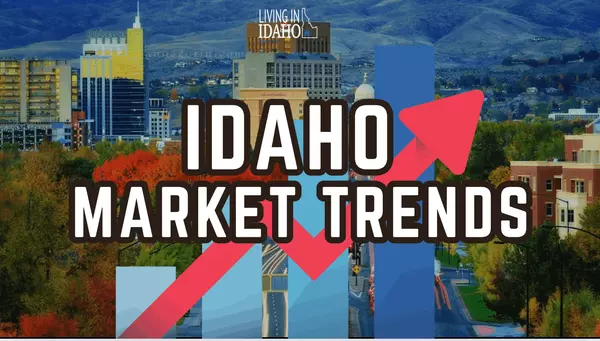
Idaho Real Estate Market Trends for 2024: What to Expect
Idaho Real Estate Market Trends for 2024: What to Expect Table of Contents Introduction Current Market Overview Trends to Watch in 2024 1. Steady Home Price Growth 2. Increase in New Construction 3. Continued Demand for Rural Properties 4. Interest Rates and Their Impact 5. Shifts in Buyer Preferences Final Thoughts FAQs Introduction As we step into 2024, Idaho's real estate market continues to be a focal point for both investors and homebuyers. With its stunning landscapes, growing economy, and a blend of urban and rural lifestyles, Idaho is attracting attention like never before. But what does the year ahead hold for the Idaho real estate market? In this article, we'll dive into the key trends shaping the market in 2024 and what you can expect as a buyer, seller, or investor. Current Market Overview Before we explore the trends, it's essential to understand where the Idaho real estate market stands as we enter 2024. Boise, the state's capital, remains a hot spot, consistently ranking among the top cities for growth in the U.S. However, other areas like Coeur d'Alene, Idaho Falls, and Twin Falls are also experiencing significant growth, making Idaho a diverse and dynamic real estate market. Key Statistics: Median Home Price: $490,000 (Boise Metro Area) Inventory Levels: Low but improving compared to previous years Days on Market: Averaging 45-60 days Trends to Watch in 2024 1. Steady Home Price Growth Idaho has seen rapid home price increases in the past few years, driven by strong demand and limited supply. In 2024, while price growth is expected to moderate, it will still be positive, especially in sought-after areas like Boise and Eagle. The influx of new residents from out-of-state, particularly from California and Washington, continues to drive demand. What This Means: If you're a seller, you can expect favorable conditions, but pricing your home right is crucial to attract serious buyers. If you're a buyer, consider acting sooner rather than later as prices are likely to continue their upward trajectory, albeit at a slower pace. 2. Increase in New Construction The ongoing demand for housing is pushing builders to increase new construction projects across Idaho. In 2024, expect to see a surge in new developments in the Boise metro area as well as in smaller cities like Meridian and Nampa. What This Means: Buyers looking for modern amenities and custom homes will have more options. However, the competition among builders may also lead to higher costs, which could be passed on to the buyers. 3. Continued Demand for Rural Properties The trend of moving to more rural and suburban areas that began during the pandemic is here to stay. With more people embracing remote work, the desire for larger properties with more land is increasing. Areas like Sandpoint and McCall are becoming prime locations for those seeking a quieter lifestyle. What This Means: Expect rural property prices to rise as demand continues to grow. Sellers in these areas may find it easier to sell properties that offer space and privacy. 4. Interest Rates and Their Impact Interest rates are always a significant factor in the real estate market. While 2024 may see slight fluctuations, rates are expected to remain relatively low compared to historical averages, continuing to support home buying activity. What This Means: Buyers should monitor interest rates closely. Locking in a rate sooner could save money in the long run, especially as rates may start to inch up later in the year. 5. Shifts in Buyer Preferences Buyers' preferences are evolving. In 2024, we expect to see more demand for energy-efficient homes, smart home technology, and sustainable living options. Additionally, there's a growing interest in multi-generational homes that accommodate larger families under one roof. What This Means: Sellers should consider upgrading their homes with modern amenities to meet buyer expectations. Buyers should be prepared to prioritize features that align with long-term sustainability. Final Thoughts The Idaho real estate market in 2024 promises to be as dynamic and exciting as ever. Whether you're buying, selling, or investing, staying informed about these trends will help you make the best decisions. Remember, the market might moderate, but Idaho's appeal isn't going anywhere. Keep an eye on local developments, and don't hesitate to reach out to our team at Living in Idaho at LPT Realty for personalized advice tailored to your needs. FAQs What is the current trend for home prices in Idaho? Home prices in Idaho are expected to continue rising in 2024, though at a slower pace compared to the previous years. Is it a good time to buy a home in Idaho? Yes, with interest rates still favorable and growing options in new construction, 2024 could be a good time to buy. However, acting sooner may help you secure a better deal. Which areas in Idaho are seeing the most growth? Boise remains a hotspot, but areas like Coeur d'Alene, Idaho Falls, and Twin Falls are also experiencing significant growth. Are rural properties still in demand? Absolutely. The trend towards rural living is expected to continue, with areas like Sandpoint and McCall becoming increasingly popular. How are interest rates expected to change in 2024? Interest rates are expected to remain relatively low but may experience slight increases throughout the year.

The Cost of Living in Idaho: What You Need to Know Before Moving
The Cost of Living in Idaho: What You Need to Know Before Moving Table of Contents Introduction Housing Costs in Idaho Transportation Costs in Idaho Groceries and Dining Out Healthcare Expenses Utilities and Other Essentials Taxes in Idaho Final Thoughts Frequently Asked Questions (FAQs) Introduction Idaho is quickly becoming one of the most desirable states to live in, thanks to its stunning landscapes, friendly communities, and overall high quality of life. But what about the cost of living in Idaho? Whether you're considering a move to Boise, Idaho Falls, or a cozy small town, understanding the financial implications is crucial. Let's dive into the nitty-gritty of what it really costs to live in the Gem State. Housing Costs in Idaho Housing is often the biggest expense for anyone moving to a new state, and Idaho is no exception. Home Prices: In Idaho, the median home price is relatively affordable compared to neighboring states like Washington and California. However, prices have been on the rise, particularly in popular areas like Boise. If you're looking to buy a home in Idaho, check out all of Idaho's listings for the latest properties on the market. Renting: Renting in Idaho varies widely depending on the city. Boise, the state's capital, has higher rent prices, with a one-bedroom apartment averaging around $1,200 per month. Smaller towns offer more budget-friendly options, often under $800 for a similar apartment. Looking to understand your home’s value? Use our Instant Home Valuation tool to get a quick estimate! Transportation Costs in Idaho Idahoans enjoy relatively low transportation costs compared to other states. Gas Prices: Gas prices in Idaho hover around the national average. Depending on your location, you can expect to pay between $3.50 and $4.00 per gallon. Public Transportation: Public transportation options are limited outside of Boise, where a monthly bus pass costs about $42. In most of Idaho, owning a car is essential. Commute Times: Idahoans enjoy short commute times, averaging around 20 minutes, which helps keep fuel costs and vehicle wear-and-tear lower than in many other states. Groceries and Dining Out The cost of food in Idaho is close to the national average, but with a few local perks. Groceries: For a typical family of four, expect to spend about $800-$1,000 per month on groceries. Shopping at local farmers' markets can reduce costs while also supporting local agriculture. Dining Out: Idaho offers a range of dining options from casual eateries to fine dining. On average, a meal at a mid-range restaurant will cost around $15-$20 per person. Curious about what homes near local markets look like? Explore our acreage properties for a taste of rural Idaho living. Healthcare Expenses Healthcare costs in Idaho are slightly below the national average but vary depending on location and coverage. Insurance: Health insurance premiums in Idaho tend to be lower than in neighboring states. The average individual health plan costs around $450 per month. Medical Services: Out-of-pocket expenses for doctor visits and prescription medications are also reasonably priced, with a typical primary care visit costing between $100-$150 without insurance. Utilities and Other Essentials Utilities in Idaho are reasonably priced, contributing to the state's overall affordability. Electricity and Heating: Expect to pay about $100-$150 per month for electricity, depending on the size of your home and the season. Heating costs can increase during the colder months, particularly in northern Idaho. Water and Sewer: These services typically run between $50-$70 per month. Internet and Cable: High-speed internet in Idaho costs around $60-$80 per month, depending on the provider and package. Taxes in Idaho Idaho is known for its tax-friendly environment. Income Tax: Idaho has a progressive income tax rate ranging from 1.125% to 6.925%, depending on your income bracket. Property Tax: Property taxes in Idaho are relatively low, with the average effective property tax rate at around 0.63%. Sales Tax: Idaho has a statewide sales tax of 6%, with some areas having an additional local tax. For more detailed information, check out our mortgage calculator to help you understand how taxes might affect your home purchase. Final Thoughts Living in Idaho offers a unique blend of affordability, natural beauty, and a high quality of life. While costs can vary depending on where you choose to settle, Idaho remains a financially attractive option for many. Whether you're moving to take advantage of the great outdoors or seeking a lower cost of living, Idaho has something for everyone. Ready to start your Idaho journey? Visit Living in Idaho at LPT Realty for all your real estate needs. Frequently Asked Questions (FAQs) Is Idaho an affordable place to live?Yes, Idaho is generally affordable, especially compared to neighboring states like Washington and California. However, prices have been increasing, particularly in urban areas. What is the average cost of utilities in Idaho?Utilities in Idaho are reasonably priced, with most households spending around $150-$200 per month. How much is the average rent in Boise, Idaho?The average rent for a one-bedroom apartment in Boise is around $1,200 per month. Are there any tax benefits to living in Idaho?Idaho offers relatively low property taxes and a progressive income tax system, making it tax-friendly compared to many other states. What is the cost of healthcare in Idaho?
Categories
Recent Posts






